|
|
|
Sort Order |
|
|
|
Items / Page
|
|
|
|
|
|
|
| Srl | Item |
| 1 |
ID:
057171
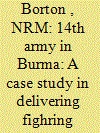

|
|
|
| 2 |
ID:
076578


|
|
|
| 3 |
ID:
123353
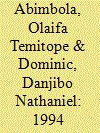

|
|
|
| 4 |
ID:
179337
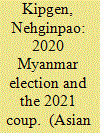

|
|
|
|
|
| Summary/Abstract |
In the 2020 general election, the National League for Democracy (NLD) won 920 of the total 1,117 seats, which was upped by 61 seats from its win in the 2015 election. The main opposition party, the Union Solidarity and Development Party (USDP), won 71 seats, down 46 from the 2015 election when it won 117 seats. The election result gave a strong mandate to the NLD for another five years. On the other hand, the USDP accused the NLD of engaging in electoral fraud including the buying of votes, and called for fresh elections in coordination with the military. Following a complaint from its proxy party, the USDP, the military initially said it would conduct an investigation in 218 townships where the military personnel and their family members cast their votes, which it expanded to 314 townships in all states and regions across the country; this finally led to the declaration of a state of emergency rule (the military coup) on 1 February 2021. Ethnic parties also alleged that the NLD government made certain pre-poll decisions that disadvantaged the ethnic minorities. This paper analyzes the electoral process and its outcome in an attempt to understand whether the election led to the deepening of democracy or the widening of division in the country's democratization process.
|
|
|
|
|
|
|
|
|
|
|
|
|
|
|
|
| 5 |
ID:
159291
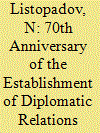

|
|
|
|
|
| Summary/Abstract |
ALL COUNTRIES in the world are special and unique. However, every state is unique in its own way. One of the most unique and interesting countries is Myanmar, or the Republic of the Union of Myanmar, prior to 1989 known as Burma.
|
|
|
|
|
|
|
|
|
|
|
|
|
|
|
|
| 6 |
ID:
139172
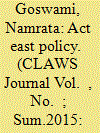

|
|
|
|
|
| Summary/Abstract |
For many years now, since 1992, when it laid its seed and slowly gathered momentum in policy circles, the “Look East” policy has been oft repeated in New Delhi’s strategic and policy circles as one of India’s foremost long-term policy visions to open up its economy for investment and trade with Southeast Asia. Increasingly now, the reference has changed from “Looking East” to “Acting East” by which one would expect that the policy is in its implementation phase. In augmenting the “Act East” policy, the northeast of India emerges, by the criterion of geography, as the region which will act as the ‘strategic catalyst’ or ‘game changer’ in accomplishing the vision that the policy aspires to embolden. Situated between China, Bhutan, Bangladesh, and Myanmar and with an international border stretching up to 4, 500 km, the region has held the promise of acting as a bridge between India and Southeast Asia for years. Its history vindicates such a role as its people have traded and travelled across the Southeast Asian region and Yunnan for years through the ancient Silk Road, trading in Himalayan salt, spices, handicrafts, food items, silk and other goods. This region witnessed migration of people from Southeast Asia and Yunnan to Assam and its surrounding hills, the most prominent being the Ahoms tracing their roots to the Tai race in Yunnan and Thailand. The Ahoms led by Sukapha arrived in Assam in
1228 A.D. and ruled over this region for 600 years. It is significant to note that the Ahoms under Lachit Borphukan successfully prevented Mughal expansion into Assam by defeating the Mughal Army in the much revered Battle of Saraighat of 1671.1
|
|
|
|
|
|
|
|
|
|
|
|
|
|
|
|
| 7 |
ID:
131247
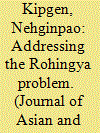

|
|
|
|
|
| Publication |
2014.
|
| Summary/Abstract |
The simmering tension between Rakhine Buddhists and Rohingya Muslims in Western Myanmar escalated into a violent conflict in 2012, first in June and again in October. The violence led to the loss of over a hundred lives, destruction of thousands of homes, and the displacement of tens of thousands of people. The Myanmar government intervened to end the bloodshed but tension continues to linger. This article argues that, instead of alienating the Rohingyas politically, consociational democracy should be pursued to address the problem. The support and cooperation of both Buddhists and Muslims, and perhaps assistance from a neutral organization like the United Nations, would help achieve a political solution.
|
|
|
|
|
|
|
|
|
|
|
|
|
|
|
|
| 8 |
ID:
099937
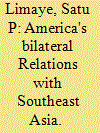

|
|
|
|
|
| Publication |
2010.
|
| Summary/Abstract |
This special issue of Contemporary Southeast Asia examining United States bilateral relations with Myanmar, Cambodia, Indonesia, Laos and Vietnam, and specifically the mutual efforts at "rapprochement", "re-engagement" or "revitalization", is informed by several considerations. First, the Obama administration took office with a declared commitment to improve relations with the Association of Southeast Asian Nations (ASEAN) as an organization and moved with alacrity to implement a number of policy decisions to that end. Second, and in parallel, the administration highlighted opportunities for broader and deeper bilateral relations with specific ASEAN member countries…Together, this focus on Southeast Asia is an important element of the current administration's overall focus on US relations with the Asia Pacific - a focus which represents one of the most significant periods of US regional activism in decades.
|
|
|
|
|
|
|
|
|
|
|
|
|
|
|
|
| 9 |
ID:
167702


|
|
|
|
|
| Publication |
New Delhi, Sage Publications India Pvt Ltd, 2015.
|
| Description |
xiv, 430p.: tables, figureshbk
|
| Standard Number |
9789351500766
|
|
|
|
|
|
|
|
|
|
|
|
Copies: C:1/I:0,R:0,Q:0
Circulation
| Accession# | Call# | Current Location | Status | Policy | Location |
| 059709 | 303.660954/CHA 059709 | Main | On Shelf | General | |
|
|
|
|
| 10 |
ID:
084352
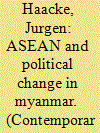

|
|
|
| 11 |
ID:
125242


|
|
|
|
|
| Publication |
2013.
|
| Summary/Abstract |
The author has tried to locate the connectivity of ASEAN-India and Myanmar. Myanmar sighted that India is an essential dialogue partner of ASEAN and is playing a crucial role in regional peace and stability. A very important observation is that Myanmar and India's North-Eastern region share similar conditions when compared to ASEAN and mainland India, respectively. For India, Myanmar is strategically important because of its geostrategic location, linking the regions of East Asia, Southeast Asia and South Asia.
|
|
|
|
|
|
|
|
|
|
|
|
|
|
|
|
| 12 |
ID:
139716


|
|
|
|
|
| Summary/Abstract |
Nyunt Maung Shein notes New Zealand’s improved relations with Myanmar and proposals to upgrade its ties with ASEAN to a strategic partnership.
|
|
|
|
|
|
|
|
|
|
|
|
|
|
|
|
| 13 |
ID:
112996


|
|
|
| 14 |
ID:
104101
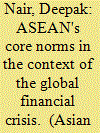

|
|
|
|
|
| Publication |
2011.
|
| Summary/Abstract |
Has the global financial and economic crisis provided stimulus for institutional development in ASEAN? Exploring the empirical trends concerning ASEAN's plans for a comprehensive community by 2015, it is a argued that no such developments have emerged. Instead, two alternative sources for potential change in ASEAN's institutional norms are elaborated
|
|
|
|
|
|
|
|
|
|
|
|
|
|
|
|
| 15 |
ID:
083531
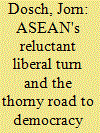

|
|
|
|
|
| Publication |
2008.
|
| Summary/Abstract |
New liberal spaces in several Southeast Asian countries have created a window of opportunity for non-state actors to lobby for the promotion of democracy and human rights in ASEAN. Democratically elected governments cannot ignore the voices of their constituencies and consequently promote liberal values at the regional level. This is mainly the case for Indonesia and the Philippines, and the other member states find it difficult to close their eyes to liberal agendas. Both Jakarta and Manila follow a foreign policy strategy of reforming ASEAN into an organization that actively subscribes to democratic values, as the process of negotiating the ASEAN Charter demonstrated. The charter gives evidence of the group's cautious liberal turn as it explicitly identifies the rule of law, good governance, democratic principles and constitutional government as essential elements of political order. However, it is a long way from the cautious acceptance of general democratic values to the active promotion and regional enforcements of rules based on these norms. In view of the diversity of political systems and ideologies within ASEAN, it comes as no surprise that the association as a collective actor is unable to agree on any meaningful strategy as to how to support and respond to political change. ASEAN's failure to use diplomatic leverage to pressure its member Burma for political reforms is a case in point. At the same time ASEAN does not impede democracy, and future analysts might be looking back on the commitment to core democratic values in the ASEAN Charter as the pre-stage of regional-democracy promotion.
|
|
|
|
|
|
|
|
|
|
|
|
|
|
|
|
| 16 |
ID:
086672
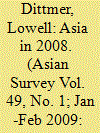

|
|
|
|
|
| Publication |
2009.
|
| Summary/Abstract |
In Asia as around the world, 2008 was a challenging year. On the one hand, it teemed with disasters, both man-made and natural, amid growing apprehension as the shock-waves of the American financial tsunami ricocheted throughout the region. On the other, guarded houe for renewal was inspired (for some) by the arrival of new political leadership.
|
|
|
|
|
|
|
|
|
|
|
|
|
|
|
|
| 17 |
ID:
126105
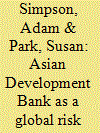

|
|
|
|
|
| Publication |
2013.
|
| Summary/Abstract |
The Asian Development Bank (adb) is engaged in development projects throughout the Greater Mekong Subregion, although for most of the past two decades it has boycotted Myanmar (Burma) because of donor government sanctions. Despite being criticised for its neoliberal focus and its lack of transparency and accountability, the adb's operations compare favourably to those of the Myanmar government and many transnational corporations constructing and financing projects there. This article engages with the concept of risk, which increasingly frames how development in fragile states like Myanmar is understood, to critically analyse the adb's nascent re-engagement in Myanmar according to the risks this poses for five constituencies: the adb itself; donor states; the Myanmar government and military; private capital; and marginalised communities. While deeper engagement in Myanmar poses different risks for each group, critical analysis suggests that the adb must increase the genuine participation of civil society actors in its activities to address the most significant risks of all, those facing marginalised communities.
|
|
|
|
|
|
|
|
|
|
|
|
|
|
|
|
| 18 |
ID:
079084


|
|
|
|
|
| Publication |
2007.
|
| Summary/Abstract |
Over the past decade, Burma has gone from being an antidemocratic embarrassment and humanitarian disaster to being a serious threat to its neighbors' security. The international community must change its approach to the country's junta
|
|
|
|
|
|
|
|
|
|
|
|
|
|
|
|
| 19 |
ID:
153720
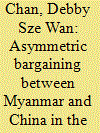

|
|
|
|
|
| Summary/Abstract |
The Myitsone Dam suspension is an asymmetric negotiation between Naypyitaw and Beijing. The bilateral agreement of the hydropower project was concluded in 2009. However, Myanmar's civil society started to oppose the dam when political opportunities expanded in 2011. The quasi-civilian government in Myanmar was caught in an ‘audience cost dilemma': either to disappoint domestic constituents by fulfilling international obligations, or to compensate the Chinese dam developer for breaching the contract. In September 2011, Myanmar President Thein Sein declared the suspension of the dam throughout his tenure. Unexpectedly, China's state-owned dam company did not sue Naypyidaw. Moreover, Beijing even engaged with societal actors in Myanmar to seek their support for the project. How could Naypyitaw defy Beijing in this Myitsone Dam case? Drawing from 35 interviews with anti-dam campaigners and other stakeholders, as well as secondary data, this article argues that the rise of civil society successfully conditioned Naypyitaw's diplomatic options in the controversy. The change of Beijing's diplomatic strategy confirms that domestic constraint in Myanmar is not rhetorical. The Myitsone Dam case is an example that shows bilateral agreement without domestic endorsement can become China's business risk. Presumably, the dispute has wider implications for other Chinese overseas projects outside Myanmar.
|
|
|
|
|
|
|
|
|
|
|
|
|
|
|
|
| 20 |
ID:
097144


|
|
|
|
|
|
|
|